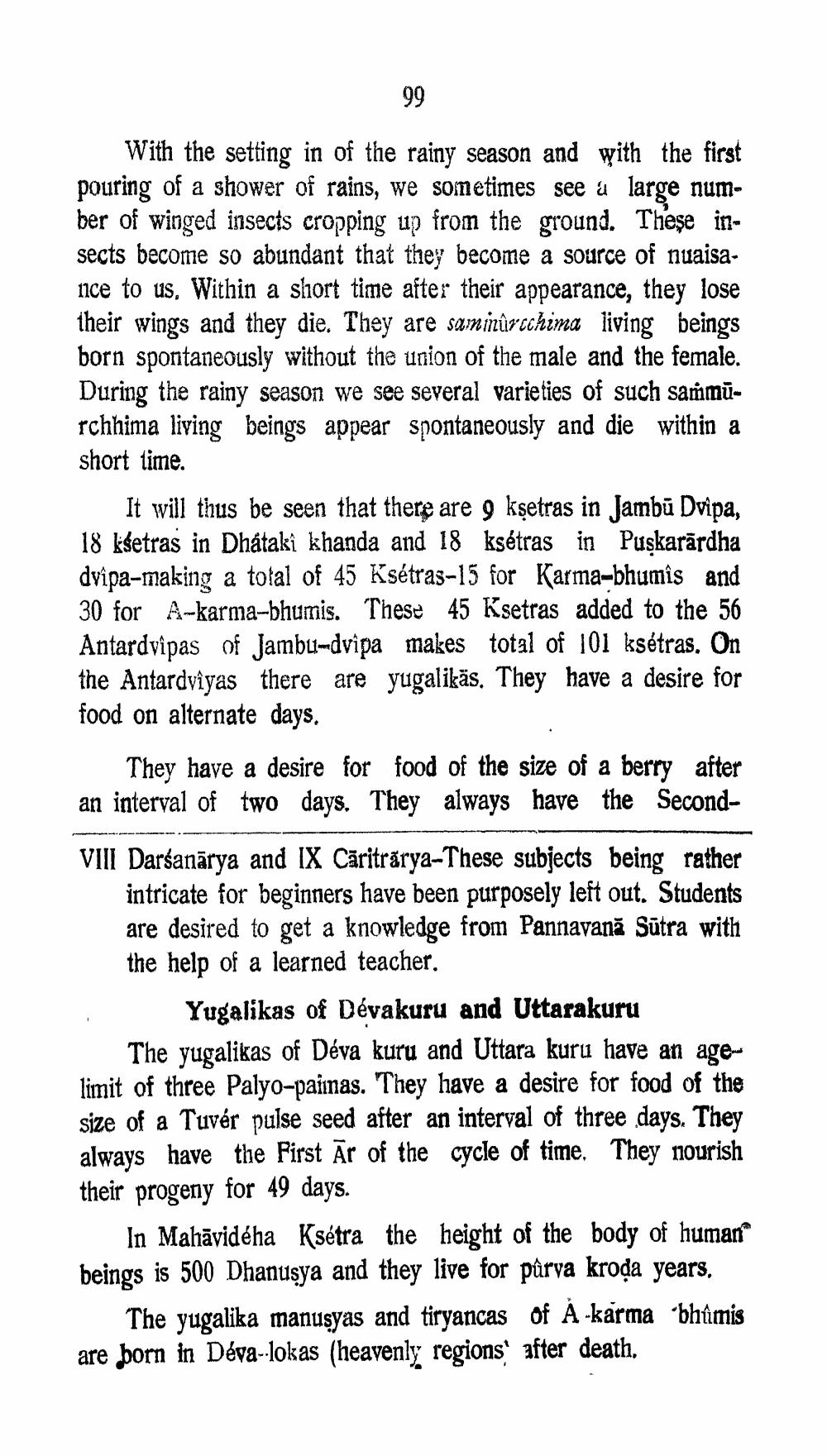________________
With the setting in of the rainy season and with the first pouring of a shower of rains, we sometimes see a large number of winged insects cropping up from the ground. These insects become so abundant that they become a source of nuaisanice to us. Within a short time after their appearance, they lose their wings and they die. They are saminûrechima living beings born spontaneously without the union of the male and the female. During the rainy season we see several varieties of such sammūrchhima living beings appear spontaneously and die within a short time.
It will thus be seen that there are 9 kşetras in Jambū Dvipa, 18 kšetras in Dhátakî khanda and 18 ksétras in Puskarardha dvipa-making a total of 45 Ksétras-15 for Karma-bhumîs and 30 for A-karma-bhumis. These 45 Ksetras added to the 56 Antardvipas of Jambu-dvipa makes total of 101 ksétras. On the Antardvîyas there are yugalikäs. They have a desire for food on alternate days.
They have a desire for food of the size of a berry after an interval of two days. They always have the Second
VIII Darśanārya and IX Cāritrarya-These subjects being rather
intricate for beginners have been purposely left out. Students are desired to get a knowledge from Pannayană Sūtra with the help of a learned teacher.
Yugalikas of Dévakuru and Uttarakuru The yugalikas of Déva kuru and Uttara kuru have an agelimit of three Palyo-painas. They have a desire for food of the size of a Tuvér pulse seed after an interval of three days. They always have the First Ār of the cycle of time. They nourish their progeny for 49 days.
In Mahāvidéha Ksétra the height of the body of human beings is 500 Dhanusya and they live for pûrya kroņa years,
The yugalika manusyas and tiryancas of A -karma 'bhůmis are born in Déva-lokas (heavenly regions after death.




